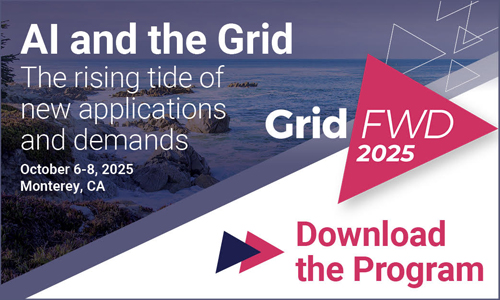Energy efficiency can play a key role as governments around the world look to increase the competitiveness and resilience of their industrial sectors and support economic growth. However, despite proven cost savings and other benefits, widespread uptake of efficiency measures within the industrial sector has been relatively muted.
The barriers to implementing efficiency measures can be as diverse as the industrial sector itself. Some may seem difficult for an organisation to surmount independently. However, many have already been overcome by their peers - and by sharing knowledge and experiences, there is an opportunity to unlock stronger action on energy efficiency, which can also boost resilience, save money and lead to higher productivity. One successful way to achieve peer-to-peer knowledge exchange is by establishing or supporting industrial Energy Efficiency Networks (EENs).
Industrial EENs come in many forms, connecting firms based on shared sectoral activities, geographic proximity, company size or other common interests. Regardless of their structure, these networks have demonstrated value across diverse sectors and organisations by enabling companies to identify, share and implement energy-saving opportunities more effectively.
For example, analysis of an Energy Efficiency Network in Sweden that ran from 2014 to 2018 found that the participating companies delivered greater energy efficiency improvements than those participating in standard energy audit programmes. Meanwhile, in Germany, 94% of the 3 000 companies that joined an Energy Efficiency Network initiative reported that they would recommend participation in such a network to others. Additional in-depth analysis of more than 350 companies in this network found that over 80% had discovered new approaches to energy savings and implemented additional efficiency measures, including those that may have been previously perceived as more cost-intensive or complex.
Today, examples of these networks can be found all over the world. And a wide range of stakeholders - from the private sector to policy makers - are emphasising their ability to deliver strong outcomes and to help both governments and industrial firms reach the goals they have set.
Energy Efficiency Networks created or supported by governments can be especially effective in fostering collaboration
Not every Energy Efficiency Network works in partnership with government. But experience shows that collaboration between the public and private sector can help maximise the benefits for industry - and that governments also benefit from establishing, engaging in and working with industrial EENs, since these networks can improve energy efficiency in a cost-effective way over a short period of time.
Based on insights from policy makers shared with the IEA, government-supported industrial EENs can break down barriers to implementation through shared case studies, site visits and peer-to-peer exchanges, while also fostering innovation and the adoption of new approaches and technologies. This can simultaneously support the broader modernisation of the industrial sector. Networks are also instrumental in building trust between governments and industry, facilitating strong communication and ensuring continuous feedback from industry on the effectiveness of government policies as they are implemented.
Examples of successful EENs that partner with governments can be found across regions. Ireland's Large Industry Energy Network, first established in 1995, now has more than 200 members that together account for almost one-fifth of Ireland's total primary energy requirement. In 2022, this network reported annual energy savings of more than 780 gigawatt-hours (GWh) based on the strategies they had implemented, which also resulted in cost savings of nearly EUR 58 million. Annual emissions reductions from participating companies ranged from 2% to 10%.
Through the Better Plants programme, the US Department of Energy supports 270 manufacturers across 3 700 facilities in meeting the ambitious energy, emissions, waste and water goals they have set. Collectively, these manufacturers - which cover 14% of onsite and offsite energy consumption by US industry - have reported energy savings of 820 000 GWh and cost savings of USD 14.1 billion since 2009.
Success has been demonstrated in emerging and developing economies as well. The Nigerian Energy Efficiency Network, which was launched in 2016 with a single network of five companies, has grown to three networks encompassing more than 30 companies - and it continues to expand. The original five companies have jointly realised annual cost savings of around NGN 280 million (Nigerian naira). Meanwhile, an Energy Efficiency Network in Vietnam, which focuses on both buildings and industry, now encompasses more than 17 000 companies, plus 600 associations and institutions.
While boosting energy efficiency remains a core objective, these networks also deliver a wide range of additional benefits for all parties. For example, industrial firms may own more valuable assets after new efficiency technologies have been installed - while on the national level, pursuing greater energy efficiency can support other government objectives such as enhancing energy security, creating jobs and supporting energy affordability.
A broader landscape of partnerships and dialogues also contributes to efficiency improvements
In addition to networks established and supported by governments, numerous industry-led collaborations - including chambers of commerce, industrial associations, sector-specific lobby groups and trade unions - actively promote and facilitate energy efficiency initiatives.
The Kenya Association of Manufacturers and the Korea Chamber of Commerce and Industry, for example, work at a national level to promote energy efficiency in the industrial sector. These groups help carry out tasks assigned by the government, such as the testing of new innovations within more flexible regulatory frameworks (referred to as "regulatory sandboxes").
Meanwhile, non-profits work across a wide range of stakeholders focused on improving energy efficiency. The Energy Efficiency Movement has more than 500 member companies in 49 countries and works closely with policy makers, while Climate Group, which works with businesses, cities and governments on topics such as decarbonisation, has a workstream focused on heavy industry.
Coordination at the international level is also key to amplifying the reach and impact of effective approaches and policies. The IEA's 10th Annual Global Annual Conference on Energy Efficiency, which saw ministers and senior officials representing 47 governments reaffirm "the role energy efficiency plays to ensure affordable and secure energy services for our citizens, enhance competitiveness of our businesses, and safeguard the energy security of our nations, also brought together more than 70 industry leaders who endorsed a four-point action plan. This included a call for strong cross-sector collaboration and knowledge exchange, as well as close dialogue between the public and private sector. Energy Efficiency Networks can help drive progress towards these objectives.
Emerging best practices for designing and implementing industrial Energy Efficiency Networks
As industrial Energy Efficiency Networks continue to mature, governments have an opportunity to assess emerging best practices, review lessons learned and understand important innovations. The following insights stem from extensive engagement with governments and industry stakeholders through the IEA's broad portfolio of energy efficiency work. They can be taken into consideration as governments design a new EENs and enhance existing ones.
- Active support from governments and engagement with them while networks are being set up significantly enhances their effectiveness and credibility and can lead to sustained stakeholder participation.
- The strategic design of Energy Efficiency Networks to align with government priorities - by targeting specific regions, sectors or business sizes, and by ensuring tailored support - can maximise policy impact.
- When governments clearly establish a network's purpose and define minimum energy savings goals at the onset, it can lead to increased commitment from participating companies, accelerated energy savings, and improved rigour and harmonisation in terms of monitoring, measurement and verification.
- Consistent monitoring, measurement and verification is key to evaluating a network's performance. Governments should use this information to adjust how they provide support.
- Establishing common data-sharing frameworks early in the process can help mitigate privacy and security concerns among participating companies.
- Government collaboration with existing associations, such as chambers of commerce, city councils, networks of engineers, non-profits and more, can help enhance member recruitment and awareness.
- Moreover, despite headline differences among individual Energy Efficiency Networks, many exhibit strong similarities. Facilitating greater knowledge exchange across these networks, as well as within them, can foster more effective approaches to energy efficiency policymaking and implementation - while also enhancing their performance and accelerating innovation.
This commentary is part of the Energy Efficiency Implementation Drive, an IEA initiative to accelerate the adoption of effective energy efficiency policies. It is a key theme of upcoming IEA workshops for policy makers that will focus on energy efficiency within the industrial sector, which will be held in Paris and Tokyo in the coming months.













